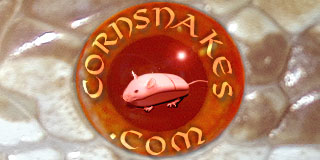NH93
New member
Personally I think the weight looks fairly good but it's slightly underweight. I think people are so used to seeing obese snakes they don't know what the muscle ridge looks like on the top of the snake or freak out seeing some ribs. If you ever find pictures of wild snakes, they are lean ribby animals.....their spines won't show, but they definitely have definition.... I think just regular meals the size of her body width every 2-3 weeks would be fine. The benefit of not feeding as often though is evident in her great feeding response. Allow a snake to actually get hungry instead of shoving food in their mouths every week and they become active and eat whenever you feed them. I hope the losers just never bother to ask for her back.....I'd document when you got her though so if sometime down the road and she's looking awesome they don't decide that NOW they want her back!
I'm sorry but I have to respectfully disagree with one point...
(Meg, do you have any ball pythons? Just out of friendly curiousity
However, as per my disagreement, many ball pythons (female) tend to be well over 1000g or even 2000g in their first year. Females get quite a lot larger than males, so sexing may be important here.
Breeding females are even larger (for obvious reasons), and I am not counting those people who super-feed their snakes.
I don't think you should be waiting 2-3 weeks to feed your snake, I think you should be feeding every 7 days. That is what other ball breeders have told me is a consistent way to keep their animals healthy. The difference with balls is to not feed over the width of their body - which it sounds like you've already done your research (10-15% of body weight, as you said). I think when the snake gets up to a healthier weight is when you may want to cut back feeding, if that is something you'd like to do. I realize that balls have a slower metabolism as well, but they still need to grow and get exercise, like any snake.
Proper temps and humidity are also stressed for importance in this species, as they are tropical (from Africa). I feel like you already know this though
There are some really helpful ball python forums out there if you're interested. I'm not sure if I've already posted one... I apologize if I have repeated myself.
www.ball-pythons.net
That is the one I go to.
